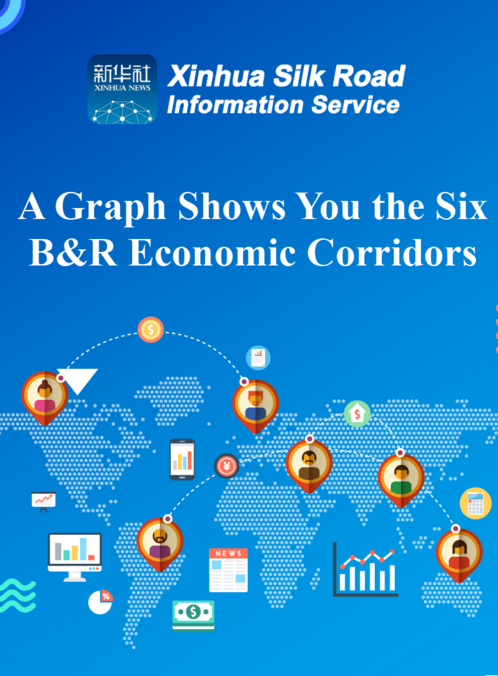BEIJING, May 8 (Xinhua) -- The six major Belt and Road economic corridors,namely the China-Mongolia-Russia Economic Corridor, China-Pakistan Economic Corridor, New Eurasian Land Bridge, China-Central Asia-West Asia Economic Corridor, China-Indochina Peninsula Economic Corridor, and Bangladesh-China-India-Myanmar Economic Corridor, are important pillars for boosting regional economic cooperation under the framework of the Belt and Road Initiative (BRI).
The China-Mongolia-Russia Economic Corridor
The China-Mongolia-Russia Economic Corridor has two key traffic arteries, with one extending from China's Beijing-Tianjin-Hebei region to Hohhot and on to Mongolia and Russia, and the other extenting from China's Dalian, Shenyang, Changchun, Harbin and Manzhouli to Russia's Chita.
The China-Pakistan Economic Corridor
With a total length of 3,000 kilometers, the China-Pakistan Economic Corridor connects the Silk Road Economic Belt in the north and the 21st Century Maritime Silk Road in the south.
The New Eurasian Land Bridge
As a major project under the framework of the BRI, the New Eurasian Land Bridge provides a convenient channel for economic and trade cooperation between the countries along the routes as well as the two continents of Asia and Europe.
The China-Central Asia-West Asia Economic Corridor
The China-Central Asia-West Asia Economic Corridor links China and the Arabian Peninsula, generally following the trajectory of the ancient Silk Road.
The China-Indochina Peninsula Economic Corridor
The China-Indochina Peninsula Economic Corridor will help to create a regional economy bolstered by complementary strengths to ensure sound regional development.
The Bangladesh-China-India-Myanmar Economic Corridor
The proposal for the Bangladesh-China-India-Myanmar Economic Corridor was unveiled by China and India in May 2013, with the objective of linking the two huge markets of China and India and enhancing regional connectivity.





 A single purchase
A single purchase









